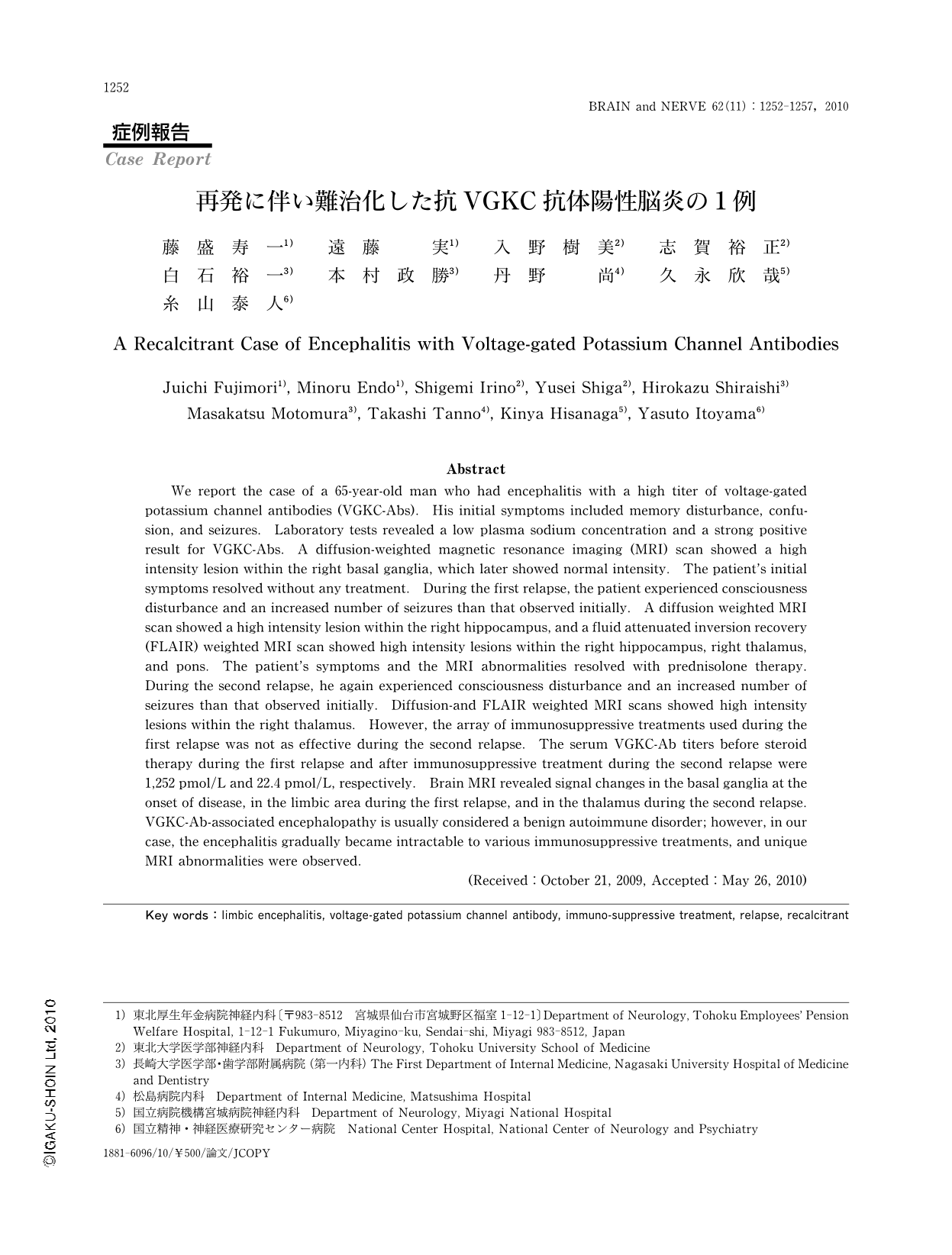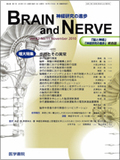Japanese
English
- 有料閲覧
- Abstract 文献概要
- 1ページ目 Look Inside
- 参考文献 Reference
はじめに
電位依存性カリウムチャネル(voltage-gated potassium channel:VGKC)抗体陽性の辺縁系脳炎は免疫抑制療法によって改善することが多く,比較的予後のよい疾患とされてきたが1),近年再発例の報告も散見される2-6)。われわれは再発時に病巣部位が移動し,治療への抵抗性が増大して予後不良であった抗VGKC抗体陽性脳炎の症例を経験したので報告する。
Abstract
We report the case of a 65-year-old man who had encephalitis with a high titer of voltage-gated potassium channel antibodies (VGKC-Abs). His initial symptoms included memory disturbance, confusion, and seizures. Laboratory tests revealed a low plasma sodium concentration and a strong positive result for VGKC-Abs. A diffusion-weighted magnetic resonance imaging (MRI) scan showed a high intensity lesion within the right basal ganglia, which later showed normal intensity. The patient's initial symptoms resolved without any treatment. During the first relapse, the patient experienced consciousness disturbance and an increased number of seizures than that observed initially. A diffusion weighted MRI scan showed a high intensity lesion within the right hippocampus, and a fluid attenuated inversion recovery (FLAIR) weighted MRI scan showed high intensity lesions within the right hippocampus, right thalamus, and pons. The patient's symptoms and the MRI abnormalities resolved with prednisolone therapy. During the second relapse, he again experienced consciousness disturbance and an increased number of seizures than that observed initially. Diffusion-and FLAIR weighted MRI scans showed high intensity lesions within the right thalamus. However, the array of immunosuppressive treatments used during the first relapse was not as effective during the second relapse. The serum VGKC-Ab titers before steroid therapy during the first relapse and after immunosuppressive treatment during the second relapse were 1,252 pmol/L and 22.4 pmol/L, respectively. Brain MRI revealed signal changes in the basal ganglia at the onset of disease, in the limbic area during the first relapse, and in the thalamus during the second relapse. VGKC-Ab-associated encephalopathy is usually considered a benign autoimmune disorder; however, in our case, the encephalitis gradually became intractable to various immunosuppressive treatments, and unique MRI abnormalities were observed.
(Received:October 21,2009,Accepted:May 26,2010)

Copyright © 2010, Igaku-Shoin Ltd. All rights reserved.


